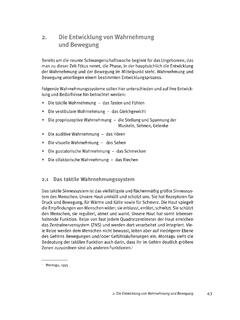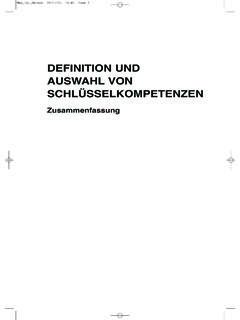Transcription of Requirements Engineering Management Handbook
1 DOT/FAA/AR-08/32 Air Traffic Organization NextGen & Operations Planning Office of Research and Technology Development Washington, DC 20591 Requirements Engineering Management Handbook June 2009 Final Report This document is available to the public through the National Technical Information Service (NTIS), Springfield, Virginia 22161. Department of Transportation Federal Aviation Administration NOTICE This document is disseminated under the sponsorship of the Department of Transportation in the interest of information exchange. The United States Government assumes no liability for the contents or use thereof. The United States Government does not endorse products or manufacturers. Trade or manufacturer's names appear herein solely because they are considered essential to the objective of this report.
2 This document does not constitute FAA certification policy. Consult your local FAA aircraft certification office as to its use. This report is available at the Federal Aviation Administration William J. Hughes Technical Center s Full-Text Technical Reports page: in Adobe Acrobat portable document format (PDF). Technical Report Documentation Page 1. Report No. DOT/FAA/AR-08/32 2. Government Accession No. 3. Recipient's Catalog No. 4. Title and Subtitle Requirements Engineering Management Handbook 5. Report Date June 2009 6. Performing Organization Code 7. Author(s) David L. Lempia and Steven P. Miller 8. Performing Organization Report No. 9. Performing Organization Name and Address Rockwell Collins, Inc. 10. Work Unit No. (TRAIS) 400 Collins Road NE Cedar Rapids, Iowa 52245 11. Contract or Grant No.
3 DTFACT-05-C-00004 12. Sponsoring Agency Name and Address Department of Transportation Federal Aviation Administration Air Traffic Organization NextGen & Operations Planning Office of Research and Technology Development 13. Type of Report and Period Covered Final Report Washington, DC 20591 14. Sponsoring Agency Code AIR-120 15. Supplementary Notes The Federal Aviation Administration Airport and Aircraft Safety R&D Division COTR was Charles Kilgore. 16. Abstract This Handbook presents a set of recommended practices on how to collect, write, validate, and organize Requirements . It attempts to bring together the best ideas from several approaches, organize them into a coherent whole, and illustrate them with concrete examples that make their benefits clear. The Handbook is targeted to the domain of real-time, embedded systems and specifically to the avionics industry.
4 It describes a set of recommended practices in which basic concepts can be practiced in isolation, but reinforce each other when practiced as a whole. These practices allow developers to progress from an initial, high-level overview of a system to a detailed description of its behavioral and performance Requirements . Due to the growing importance of software in avionics systems, these practices emphasize techniques to ease the transition from system to software Requirements . Concrete examples are used throughout the Handbook to make the concepts clear, but there are many other formats that could be used to obtain the same objectives. It is expected that most organizations wanting to use these practices will want to modify them, perhaps significantly, to integrate them with their existing processes and tools. 17. Key Words Requirements , Engineering , Avionics, Systems, Software 18.
5 Distribution Statement This document is available to the public through the National Technical Information Service (NTIS) Springfield, Virginia 22161. 19. Security Classif. (of this report) Unclassified 20. Security Classif. (of this page) Unclassified 21. No. of Pages 146 22. Price Form DOT F (8-72) Reproduction of completed page authorized TABLE OF CONTENTS Page EXECUTIVE SUMMARY xi 1. INTRODUCTION 1 Purpose 1 Background 2 2. RECOMMENDED PRACTICES Develop the System Overview 4 Develop System Overview Early 5 Provide System Synopsis 6 Identify System Contexts 6 Use Context Diagrams 7 Describe External Entities 7 Capture Preliminary System Goals 7 Maintain System Goal Information 8 Identify the System Boundary 9 Identify the System Boundary Early 10 Choose Environmental Variables 11 Choose Controlled Variables 12 Choose Monitored Variables 12 Ensure Environmental Variables are Sufficiently Abstract 12 Avoid Presentation Details in Environmental Variables 12 Define All Physical Interfaces 13 Develop the Operational Concepts 14 Document Sunny Day System Behavior 16 Include How the System is Used in its Operating
6 Environment 17 Employ the Use Case Goal as its Title 18 Trace Each Use Case to System Goals 18 Identify Primary Actor, Preconditions, and Postconditions 18 Ensure Each Use Case Describes a Dialogue 18 iii Link Use Case Steps to System Functions 19 Consolidate Repeated Actions Into a Single Use Case 19 Describe Exceptional Situations as Exception Cases 19 Describe Alternate Ways to Satisfy Postconditions as Alternate Courses 19 Use Names of External Entities or Environmental Variables 20 Avoid Operator Interface Details 20 Update the System Boundary 20 Assemble a Preliminary Set of System Functions 21 Identify the Environmental Assumptions 22 Define the Type, Range, Precision, and Units 23 Provide Rationale for the Assumptions 24 Organize Assumptions Constraining a Single Entity 24 Organize Assumptions Constraining Several Entities 25 Define a Status Attribute for Each Monitored Variable 26 Summary 27 Develop the Functional Architecture 27 Organize System Functions Into Related Groups 28 Use Data Flow Diagrams to Depict System Functions 29 Minimize Dependencies Between Functions 30 Define Internal Variables 31 Nest Functions and Data Dependencies for Large Specifications 31 Provide High-Level Requirements That are Really High Level 32 Do Not Incorporate Rationale Into the Requirements 33 Revise the Architecture to Meet Implementation Constraints 33 Modify the Architecture to Meet Implementation Constraints 34 Keep Final System Architecture Close to Ideal
7 Functional Architecture 35 Revise the System Overview 35 Revise the Operational Concepts 39 iv Develop Exception Cases 39 Link Exception Cases to Use Cases 40 Revise the System Boundary 40 Document Changes to Environmental Assumptions 40 Revise Dependency Diagrams 40 Revise High-Level Requirements 42 Identify the System Modes 42 Identify Major System Modes 44 Define How System Transitions Between Modes 44 Introduce Modes for Externally Visible Discontinuities 45 Develop the Detailed Behavior and Performance Requirements 45 Specify the Behavior of Each Controlled Variable 47 Specify the Requirement as a Condition and an Assigned Value 47 Ensure That Detailed Requirements are Complete 47 Ensure That Detailed Requirements are Consistent 49 Ensure That Detailed Requirements are not Duplicated 49 Organize the Requirements 49 Define Acceptable Latency for Each Controlled Variable 49 Define Acceptable Tolerance for Each Controlled Variable 50 Do Not Define Latency and Tolerance for Internal Variables 50 Alternative Ways to Specify Requirements 51 Define the Software Requirements 52 Specify the Input Variables 56 Specify the Accuracy of Each Input Variable 57 Specify the Latency of Each Input Variable 57 Specify IN' for Each Monitored Variable 57 Specify the Status of Each Monitored Variable 58 Flag Design Decisions as Derived Requirements 59 Specify the Output Variables 59 Specify the Latency of Each Output Variable 60 Specify the Accuracy of Each Output Variable 60 Specify OUT' for Each Controlled Variable 61 Confirm Overall Latency and Accuracy
8 61 v vi Allocate System Requirements to Subsystems 63 Identify Subsystem Functions 65 Duplicate Overlapping System to Subsystem Functions 67 Develop a System Overview for Each Subsystem 69 Identify the Subsystem Monitored and Controlled Variables 69 Create New Monitored and Controlled Variables 69 Specify the Subsystem Operational Concepts 70 Identify Subsystem Environmental Assumptions Shared With Parent System 70 Identify Environmental Assumptions of the New Monitored and Controlled Variables 70 Complete the Subsystem Requirements Specification 71 Ensure Latencies and Tolerances are Consistent 71 Provide Rationale 72 Provide Rationale to Explain why a Requirement Exists 73 Avoid Specifying Requirements in the Rationale 73 Provide Rationale When the Reason a Requirement is not Obvious 74 Provide Rationale for Environmental Assumptions 74 Provide Rationale for Values and Ranges 75 Keep Rationale Short and Relevant 75 Capture Rationale as Soon as Possible 75 3.
9 SUMMARY 76 4. REFERENCES 77 APPENDICES A Isolette Thermostat Example B Flight Control System Example C Flight Guidance System Example D Autopilot Example LIST OF FIGURES Figure Page 1 The System and its Environment 10 2 Example Use Case 17 3 Thermostat Dependency Diagram 30 4 High-Level Requirements for the Thermostat Function 32 5 Initial Isolette Fault Tree 36 6 Revised Isolette Fault Tree 37 7 Revised Thermostat Dependency Diagram 38 8 Regulate Temperature Dependency Diagram 41 9 Monitor Temperature Dependency Diagram 42 10 Regulate Temperature Function Modes 44 11 The Four-Variable Model 54 12 Extended Software Requirements 55 13 High- and Low-Level Software Requirements 62 14 Functional Decomposition of System 1 65 15 Decomposition of System 1 Into Subsystems 66 16 Allocation of FCS Requirements Into Subsystems 68 vii viii LIST OF TABLES Table Page
10 1 Develop the System Overview 5 2 Identify the System Boundary 9 3 Thermostat Monitored and Controlled Variables 11 4 Develop the Operational Concepts 14 5 Revised Thermostat Monitored and Controlled Variables 21 6 Preliminary Set of Isolette Thermostat Functions 21 7 Identify the Environmental Assumptions 22 8 Environmental Assumptions for the Current Temperature Monitored Variable 23 9 Develop the Functional Architecture 27 10 Revise the Architecture to Meet Implementation Constraints 33 11 Identify the System Modes 43 12 Definition of Regulator Status 45 13 Develop Detailed Behavior and Performance Requirements 46 14 Allowed Heat Source Latency Behavior 50 15 Tabular Specification of Requirements 51 16 Define the Software Requirements 52 17 Input Variable Curr Temp In 56 18 INPUT Variable Curr Temp Status In 58 19 IN' Relation for Value of Current Temperature' 58 20 IN' Relation for Status of Current Temperature' 59 21 OUTPUT Variable Heat Control OUT 60 22 OUT' Relation for Heat Control 61 23 Allocate System Requirements to Subsystems 63 24 Provide Rationale 72 LIST OF ACRONYMS AND ABBREVIATIONS AP Autopilot AHS Attitude Heading System ARINC Aeronautical Radio.















